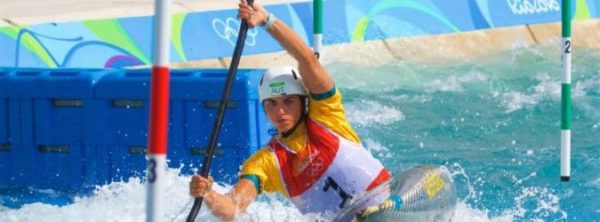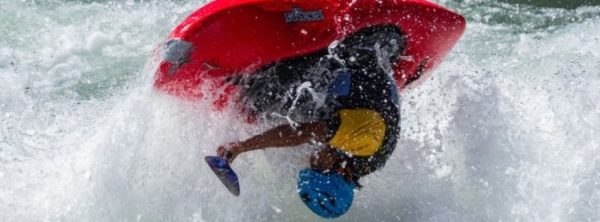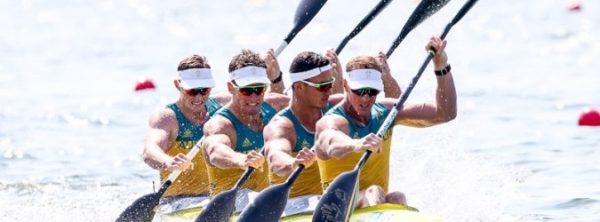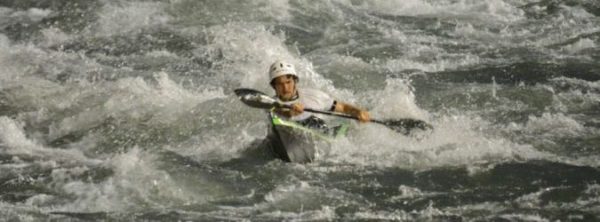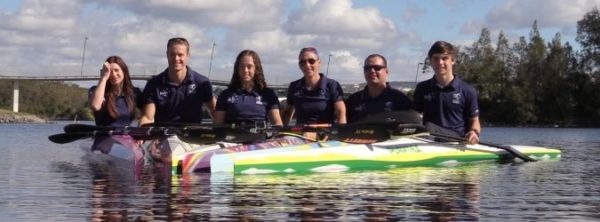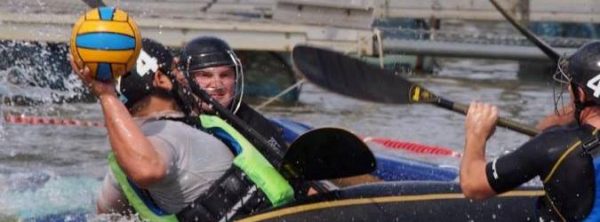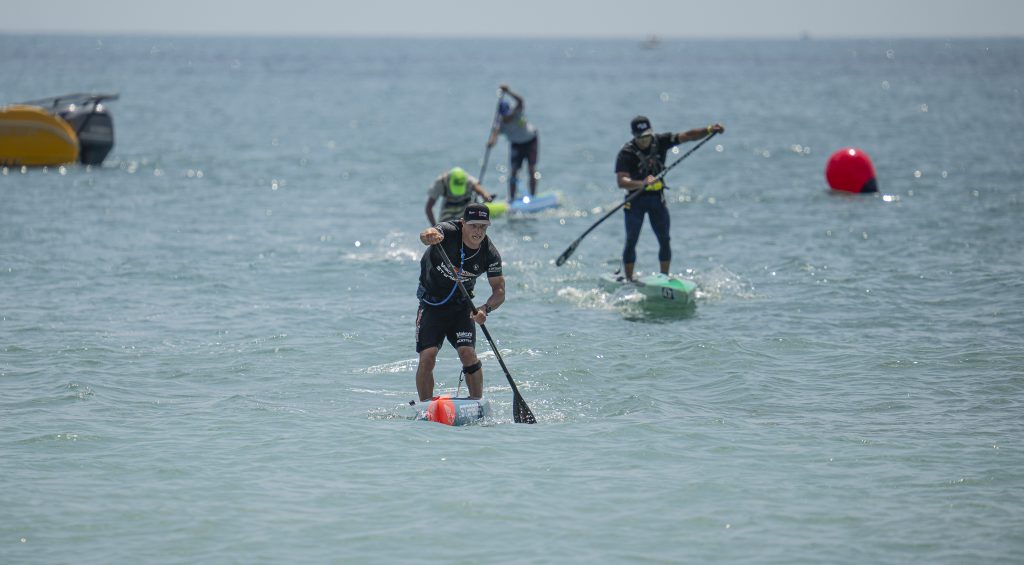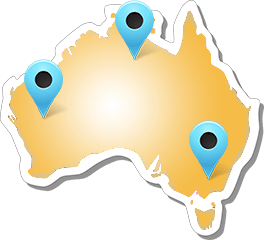Scope
These guidelines provide the minimum requirements for the safe conduct of Recreational Paddling activities. This isn’t the safety guidelines for community paddling. For that you want Paddle Smart. This document gives a guideline to help operate a safe fun paddling activity. All Leaders are responsible to ensure that they undertake a thorough risk assessment prior to activities to ensure that additional requirements are considered and if required undertaken.
These guidelines do not apply to competitive paddling such as Flatwater Racing, Marathon Racing, Ocean Racing, Slalom Racing, Freestyle, Wildwater Racing, and Canoe Polo. Requirements for the safe conduct of these activities are detailed in the applicable competition rules and other relevant policies issued by the ICF and PA.
The guidelines do not address the many varied requirements of State and Federal Legislation, much of which applies to general boating activities and not just paddling activities.
PA Leaders are required to know and operate in their leadership capacity in accordance with these guidelines. Likewise, PA National Training Providers must operate in accordance with these guidelines.
PURPOSE
(a) All on-water activity involve a level of risks and hazards, most of which can be eliminated by thorough planning, good Leadership skills and effective management.
Well run activities will:
- contribute to the safety of participants and the public
- assist in the smooth running of the activity
- add to the enjoyment of the participants.
(b) The purpose of these guidelines is to promote safe, well run and enjoyable paddling activities. These guidelines play an important role in fulfilling PA’s goal to pursue high standards of safety, education and training in all aspects of the sport. The Guidelines:
- provide information from which government regulators (e.g. land managers, waterways departments, educational authorities, etc), organisations conducting paddling activities (e.g. tour operators, canoe clubs, schools, community groups, etc), Leaders can establish appropriate policies and standards for their paddling activities
- provide details on managing participants before, during and after activities
- establish minimum standards for different grade activities for the qualifications of Instructor or Guide, participants, boats and equipment, communications and the management of emergencies.
- to promote safety and enjoyment in paddling activities
DEFINITIONS
Guide – A person who leads or guides a group without the intention of imparting skills or knowledge beyond that which is necessary to participate safely and adequately in the activity. At the end of a session or program with a guide, the intent is not for the participant to have acquired the skills to independently participate in the activity.
ICF – International Canoe Federation.
Instructor – A person who facilitates skill transfer or development to participants in order that they may act independently or with minimal supervision. This requires the instructor to be able to critique technique, apply a variety of appropriate instructional strategies and may require them to assess participant’s skill acquisition at the end of a program or session.
Leader – A person giving direction and guidance to a group. This includes, Instructors, Guides, leaders and Supervisor
PA – Paddle Australia
Participant – A person who participates independently or under supervision in an outdoor activity. The ability to demonstrate participatory skills to the appropriate standard is a pre-requisite to performing as a Guide or Instructor in outdoor recreation.
PAQS – Paddle Australia Qualification Scheme
SOT – Sit-on-top kayak
SUP – Stand Up Paddleboard
ACTIVITY PLAN
An activity plan assists a leader to identify and achieve a programs goals and objectives while helping to foresee and minimize risks and hazards. There are many ways to develop and record an activity plan and everyone and every organisation will have its own way. Below is a list to consider in your planning that will help you develop a plan that will help maximize an activities success and reduce risks to participants.
People
- Program objectives
- Size of group
- Age, fitness, medical and skills of participants
- Socio-cultrual demographics
- Level of supervision required
- Duration of activity
Environment
- Location and route selection
- Location specific information
- Maps and charts available
- Permits and permission requirements
- Water availability
- Minimal impact capabilities
- Seasonal changes
- Evacuation accessibility
Equipment
- Personal and group equipment in good working condition
- Food, water and clothing requirements
- Communication coverage
- First aid
Leader
- Ratios of leader to participant
- Competence and skills of leader to handle all possible situations
- Qualification and requirements for leader (working with children card)
- Leaders experience and knowledge of the area
- Cancellation, modification of plans procedure
WEATHER
Having the ability to gain an up to date forecast is vital to any planning and risk management while in the field. Forecasts can be gained form a number of locations including, news papers, radio, Marine VHF radio and internet.
Bureau of meteorology (BOM) is the Paddle Australia recognised source of weather forecasts www.bom.gov.au . Ensure that you have a system in place to gain forecasts if you are on a trip.
Poor visibility
When paddling in poor visibility considerations should be made for your own and the group’s safety.
Considerations should include but not limited to.
– Ratios of leader to participant
– Group movement and spread
– System for verbal and nonverbal communication
– Ability to identify paddlers eg: light stick, different colours for leader and participant
– Local maritime/council lighting requirements
– Ability to light up a rescue/emergency
– Emergency plans
RISK MANAGEMENT
The risk management process should be directly applied to the management of safety risks associated with planning organised paddling activities and must be undertaken prior to each organized activity occurring.
Paddle Australia recommends all foreseeable risks for a program should be identified under logical headings People, Equipment and Environment. These risks should be rated in the level of risk by using a documented likelihood verse consequence table. The hazards that then lead to these risks can be identified and a management strategy determined to minimise the likelihood or consequence to achieve an acceptable level of risk.
A risk management sample template can be found in Appendix F
PA Leaders are educated in Risk Management processes.
PA recommends that all personnel or organisations conducting paddling activities develop an Emergency Management Plan that allows them to establish a programmed response to incidents that reduce the consequences should such incidents occur.
An Emergency Management Plan should consider:
- Chain of Command
The persons or positions with which a leader should communicate or report to, in the event of an emergency response.
- Communication Systems and Technology
Emergency responses in outdoor environments can be assisted by various technological modes of communication. These may include mobile phones, radios, satellite phones, PLBs and EPIRBs, etc. While all can assist in the activation of an emergency response, consideration should always be given to their limitations (e.g. mobile telephone network coverage, battery failure).
When activating an emergency response requiring external assistance, the following information should be accurately provided to the recipient of such calls for assistance:
- communication and contact details
- escape route and location information
- participant lists
- medical forms and patient details
- transport details.
(c) Emergency Procedures
- Emergency procedures should be documented before embarking on an activity and will be implemented in the event of:
- serious injury or fatality
- serious threats to personal safety from high risk environmental conditions (e.g. storm cells)
- lost participants
- behavioural management problems
- Such procedures should include:
- priority of tasks: immediate, second, third
- roles and responsibilities
- exit routes, emergency and evacuation procedures
- injury
- lost person
- contact details for base camp, and program administrators as required
- contact details for police, rescue and medical services in the area
- communication modes and protocols
- location management
- vehicular access
- boat access
- helicopter access
- identification of nearest medical facilities
- bushfire
- lightning
- flooding
- post incident management: contact of insurer, legal procedures, post incident trauma counseling.
FLOAT PLAN
PA recommends that for every trip that leaves the immediate launch area, details of the participants and the trip should be lodged with a responsible person or authority so that in the event of an emergency, a detailed description of the group and its activity is readily available. PA refers to these details as a Float Plan.
For trips, full details of the route and any contingency plans should be noted.
A float plan can also be accessed through Paddle Australia’s Paddle prep app
RESPONSIBILITIES OF THE LEADER
Leaders have the following minimum responsibilities:
- Research likely hazards
- Confirm group experience/capabilities (where possible)
- Adhere to these guidelines and PA’s Safeguarding Children & Young People Policy
- Ensure a full briefing of participants is clearly carried out and understood
- Check environmental conditions (i.e. river levels, weather reports, weather forecast)
- Ensure that all group equipment is stored correctly
- Confirm head count before departure and throughout trip
- Be alert for physical and psychological condition of the group
- Control the pace of the group
- Rest group if necessary
- Ensure, to the best of their ability, that participants do not get into situations beyond their capabilities
- Designate responsibility to other leaders
- Confirm headcount after trip
- Notify appropriate persons of safe completion
- Check all equipment on return
Before commencing the trip, it is the Leader’s responsibility to ensure that each party member has the knowledge, ability, skill and equipment to participate safely.
COMPETENCY AND QUALIFICATIONS OF LEADERS
PA Leaders are trained to conduct paddling activities. All PA Leaders have been assessed acting to the full capacity of their Award in the Award context. Details of the requirements and operating scope for each of PA’s qualifications can be found at here under qualifications
In addition to achieving the minimum level of competence, PA Leaders must re-register with PA. Accreditation re-registration is a policy that requires PA Leaders to undertake a prescribed amount of continuing education. Re-registration is required to retain any rights as an PA Leader
Re-registration is part of the continuing education of paddling Leader. Its purpose is:
- an objective, moderated demonstration of currency to the national standard
- to ensure that Leaders are up to date with the latest techniques, teaching methods,
- safety issues, legal responsibilities and risk management information
- to extend the knowledge and skills of Leaders
- to provide an avenue for post accreditation servicing.
All PA Leader qualifications are valid for three years from the date of accreditation registration or re-registration.
Leaders are also required to comply with and observe the constitution, by-laws, and regulations of PA, including the PA Member Protection Bylaw and these Safety Guidelines.
A Statement of Attainment, listing the achievement of units of competence under the National Outdoor Recreation Industry Training Package, is recognition of learning and not always a demonstration of current skills and knowledge. Holding an PA award demonstrates currency in technique, safety, injury prevention and enrollment in ongoing education, and is the appropriate registration for a paddling leader.
CHILD SAFETY
The leader should comply at all times with PA’s Child Safety Framework, including the Safeguarding Children and Young People Policy.
FIRST AID QUALIFICATIONS OF PA LEADERS
First aid qualifications, personnel requirements and equipment/kit requirements are regulated at state level by the work cover of OH&S government regulatory body.
All Leadres should have a current state government regulating body approved first aid qualification.
All Leaders should carry a first aid kit that contains the appropriate contents for the activity or trip.
PA also recommends that trip Leaders should hold a current wilderness/remote area first aid certificate, in addition to their first aid qualification, for any trip, which is, at any point, more than one hour from medical attention.
COMMUNICATION AND AUTHORITY
Leaders and participants should use an agreed and understood system of communication. PA recommends that the National Standard Signals be understood and used by all paddlers. Details of the National Standard Signals can be found in Appendix A.
PROGRAM / ACTIVITY BRIEFING
Prior to any program, it is the responsibility of the leader to brief the participants on a number of factors to help ensure a safe, fun, successful program. This briefing will help participants understand the expectations of the program and decide if they still wish to participate.
Briefings may include but not limited to.
- the National Standard Signals
- the correct and safe handling and navigation of paddle craft
- the correct fitting and wearing of appropriate Lifejackets Level 50 or Level 50S which is recommended to be worn at all times
- the whereabouts of all group and safety equipment
- the correct and safe operation of any (including safety) equipment
- in sea programs, the group spacing and average speed as well as the signals to be used by the trip leader and participants
- the group’s capsize procedure
- craft control
- sun and or environmental protection
- group medical concerns
- the program for the day
- the role of each participant
- foreseeable hazards
- the expectations of each participant
GROUP SIZE
Group size is an important consideration from group management and more. Things for a leader to consider when deciding on group size may include
- Leadership numbers
- Accommodation limits
- Transport limits
- Environmental impact
- Permit limitations
- Program goals and objectives
- Available resources
Large groups may be split into smaller groups to help with many of the factors above, but all groups require individual planning and leadership.
RATIOS
The following ratios are provided as a baseline for the calculation of operating leader/guide to participant numbers. A risk analysis must be conducted for all paddling activities to determine the appropriate ratios for the group and its activity.
Ratios for Flatwater/inland paddling
In adverse weather, the conditions on a large body of inland water can become dangerous due to large seas, overtopping waves and strong gusts of wind.
Water temperatures, even in summer, can be quite low.
Control of a group can be rapidly lost as conditions deteriorate, and capsizes occur. Under such conditions, it can be difficult to keep the group together unless they are able to respond skillfully and effectively to instructions: the larger the group, the more so.
The starting point for determining the ratio of leader/guide to participants for conducting group paddling activities on inland water are 1:6, or 1:8 in double craft.
Supervision should be increased towards a ratio of 1:4 considering the following conditions or variables:
- participants have special needs, including behavioural, physical or mental disability
- participants are primarily younger children
- weather conditions are poor (existing or forecast), with white horses, wind and/or cold water
- any planned trip is along a committing shoreline with few safe egress points
- the area is remote from observation or rescue
- the body of water is subject to unpredictable winds, common in mountainous area
Supervision should be relaxed towards a ratio of 1:12 considering the following conditions or variables:
- all participants are 17 years of age or older
- all participants are competent, both individually and as a group, to deal with likely problems which may be encountered
- good weather forecast with light/favourable winds, flat and warm water which present little risk to participants
- area is in a non-remote where assistance from other groups or craft might be available
- planned trip will stay close to an easily accessible shoreline.
RATIOS FOR WHITEWATER PADDLING ON MOVING RIVERS UP TO GRADE 3
Communication problems caused by water noise, helmets covering ears, and a shortage of safe, ‘assembly points’, will always make the management of a large group extremely difficult. The value of a qualified assistant (to bring up the rear, or pre-shoot a rapid, or deal with individual problems) cannot be over-emphasised when paddling on moving water.
The acceptable ratio for conducting group paddling activities in moving water up to, and including, Grade 3 is 1:4.
Supervision should be increased under the following conditions:
- participants have special needs, including behavioural, physical or mental disability
- participants are primarily younger children
- the river being paddled is in flood
- the water temperature is cold and may affect participant’s capabilities
- the river is in a remote area
- the river is known to have few large breakouts
- the river has continuous sections of technical water
- the river has frequent ‘pinning’ hazards (rocks, trees, etc)
- egress is required above more hazardous sections.
On Grade 2 water, the ratio may be relaxed to 1:6 in the following circumstances:
- two or more instructors are with the total group
- the whitewater is in short sections rather than being continuous
- appropriate group management is applied so that only one participant is at the crux point of the rapid at any time.
RATIOS FOR SEA KAYAKING
The effect (not always obvious) of winds and currents on novice paddling groups at apparently benign- looking beaches, can be dramatic. Local knowledge, and experience in this type of environment is vital for leaders.
Control of a group at sea can be rapidly lost as conditions deteriorate, and capsizes occur. Under such conditions, it can be impossible to keep the group together unless they are able to respond skillfully and effectively to instructions: the larger the group, the more so.
Some tidal estuaries, whilst sheltered at times, at other times can present severe open sea hazards.
The acceptable ratio of leader/guides to participants for conducting group kayaking activities at sea is 1:6, or 1:8 if using double kayaks.
Supervision should be increased towards a ratio of 1:2 considering the following conditions or variables:
- participants have special needs, including behavioural, physical or mental disability
- participants are primarily children
- foreseeable conditions are poor, including swell, breaking waves, spring tides and/or wind (especially if against tide)
- the water temperature is cold and may affect participants’ capabilities
- a trip is being undertaken which:
- is along a committing shoreline
- is remote from observation
- involves unavoidable tide races or over falls
- access or egress will involve surf >1metre
Supervision may be relaxed towards a ratio of 1:10 considering the following conditions or variables:
- all participants are adults
- all participants are competent, both individually and as a group, to deal with likely problems, which may be encountered
- all participants are reliable rollers
- good weather forecast for a stable sea state with no spring tides or tidal stream
- water temperatures are warm and present little risk to participants
- the location/route is in not remote and assistance from other groups or craft is available
- the location/route is always close to an easily accessible shoreline
- the leader holds a higher qualification than required for the activity.
RATIOS FOR COASTAL TOURING – SIT ON TOP
Refer to ratios for Sea kayaking above
Note: Where a group has to pass a crux point, travel a rapid, launch or recover through surf or performs any activity that increases the level of risk only one participant should be in the danger zone at any time, and a dedicated leader will be attendant to the participant in the danger zone
SKILLS OF PARTICIPANTS
The leader should take all reasonable steps to ensure that participants are competent to participate in the proposed activity. In this regard the leader should conduct an on-water familiarisation session to demonstrate and practice relevant skills and procedures including, but not limited to, rescue, self rescue and capsize drills. If the leader judges that a person is not sufficiently capable or responsible (e.g. by virtue of their age) to participate in the activity, then that person should not be permitted to participate.
Equipment requirements vary with the objectives of the trip plan and the environmental conditions likely to be encountered. When planning equipment requirements for a paddling trip it is important that leaders consider all possible eventualities.
It is the responsibility of leaders to ensure that all participants carry with them all necessary equipment for the activity. They will also ensure that they have adequate emergency supplies to handle any likely contingency. In some situations such as Flatwater Lifeguards operating on very small bodies of water it is sufficient for much of the equipment to be available on shore and not carried in boats.
BOATS AND ASSOCIATED EQUIPMENT
These Safety Guidelines are concerned primarily with recreational craft, not those used in competition, where rules govern safety features, use of rescue craft, etc. All craft should be used in the environments and conditions for which they were designed.
Canoes
Open canoes are best suited to sheltered inland waters as they are badly affected by wind and wave. They are normally paddled with single blade paddles.
- Handles each end to carry craft
- Buoyancy each end to ensure craft floats level when flooded
- Loop or toggle on each end that can be held when craft is upside down
Those used on whitewater, up to Grade 2, are fitted with large airbags taking up any space not occupied by the paddlers.
Specialist whitewater canoes are used on higher grades.
Kayaks
Kayaks cover a large range of craft from decked, Sit on Tops, Inflatables and more. These craft are normally paddled with two-bladed paddles. Spraydecks are used on enclosed kayaks to minimise water into the cockpit, providing better protection for paddlers to the elements and reducing the likelihood of hypothermia. Safe use of spraydecks requires training. Training in rescue procedures is required for all kayaks, and techniques vary according to craft type and environment.
Ocean
‘Recreational’ kayaks
- about 3 m for singles and wide
- large open cockpits.
They are suited to flat, sheltered waters only.
Touring kayaks
- 3.5 to 4.5 m in length
- often have bulkheads and hatches.
They are suited to open waters such as estuaries and bays, but not the open sea.
Sea Kayak
- 4.5 – 6,0 m in length
- Minimum enclosed volume cockpit (bulkheads or integrated cockpit) so that the kayak is controllable in sea conditions with the cockpit flooded
- Positive buoyancy made up of compartments or fixed flotation—it is recommended that empty compartments be filled with buoyancy material (inflated wine/springwater/fruit juice cask bladders, etc.) that will minimise the amount of water that enters a compartment in the event that its integrity is compromised
- Deckline system of at least 6mm in diameter that is secured to the deck with fastenings that will not fail under normal sea conditions, and that are sufficiently spaced to keep the deckline controlled. The deckline system plus cockpit surrounds should provide handholds for the complete length of the kayak
- Toggles or other safe handholds as near as practical to the bow and stern. If used, hand loops must not allow the full insertion of a hand
- Pump or self-bailer
The ability to remove water from a sea kayak cockpit is essential since the addition of water:
- reduces stability
- increases the possibility of hypothermia
- decreases endurance
- Increases the possibility of water and salt related problems such as blisters, infection, etc.
To help ensure your safety in a sea kayak:
- you should have a “bomb proof” method of re-entering your kayak after capsize (the preferred method is re-entry and roll)
- you should be able to paddle your boat, with a fully flooded cockpit, away from a dangerous situation in offshore conditions and then be able to completely evacuate the water from the cockpit in the same conditions.
It is recommended that a pump or self-bailer system is fitted. Choice of pump needs to give careful consideration to the skills of the paddler, the vessel and expected operational use (expert advice in this regard is recommended). No pump system is failsafe and all pump systems require regular inspection and maintenance.
Whitewater
Paddle craft must be constructed specifically to reduce the risk of bending, folding or entrapment. Specifically, craft should be fitted with internal supports to resist folding. The cockpit setup should be such that the craft grips the occupant firmly for maximum control and so that the occupant can exit the craft easily.
- Craft should not collapse onto the paddler’s legs
- Depth of the cockpit, height of cockpit rim and any seat strapping must not impede exit
- Any restraining device must be single handed, single action, quick release
- Bow and stern must be rounded
- Apart from the cockpit, the boat should be filled with buoyant material, excluding as much water as possible
- Craft shall not sink when swamped, should remain horizontal and should support its occupant in the water
- End loops or toggles should be fitted within 30cm of the bow and stern, minimum diameter of 10mm with a breaking strain of 8000N. The loops must not allow the full insertion of a hand
- Footrests should be constructed so that feet will not become jammed.
Sit‑on‑top (SOT) craft
SOT kayaks are a popular choice among recreational paddlers. Recovery after a capsize is easy; right the boat and re-board. On the other hand, paddlers are more exposed to the elements and more care is needed to minimise sunburn and hypothermia.
Damaged or loose fittings and hatch covers or hull damage may allow the entry of water: these craft are not unsinkable.
Several categories exist:
- Recreational types single and double, are fairly short and wide. Being susceptible to wind, they are suitable only for flat sheltered water.
- Touring SOTs are longer and able to cope with estuary and bay conditions. They are favoured by the kayak fishing community.
- Seagoing SOTs have performance and features similar to sea kayaks but without the enclosed cockpit.
- Specialist SOTs for whitewater and surf use are available.
On open water, tethers can prevent separation of craft and paddler after capsize. There is the danger of entanglement. This is true also of paddle leashes and fishing lines.
Stand up paddle boards (SUP)
SUPs are now in use on many types of water from flat to surf. As with SOTs, paddlers are exposed to the elements, even more so.
SUPs are required to use a leg leash at all times to connect them to the craft
Inflatable craft
Inflatable craft range from little more than toys to rafts for use on serious whitewater. Others are intended for open water, where tethers may be advisable. Craft should:
- provide a stable platform allowing strokes to be performed effectively
- possess the strength to withstand all foreseeable forces
- not sink, but remain horizontal when swamped and be useable as buoyancy for its crew
- be capable of being towed by rope and grasped by hand
- allow for easy exit in the event of capsize
- not be designed, made of a material or finished in a way that could cause injury or impede exit
- be fitted with end loops or toggles
- be fitted with a footrest that will not allow feet to become entrapped, and that will not break in the event of foreseeable paddling forces or impacts
- be of a colour that is clearly visible to other water users or rescue authorities
- positive buoyancy at each end which may consist of:
- sturdy, waterproof bulkheads, fore and aft, with water tight hatch covers
- Integrated cockpits with watertight hatch covers
- fixed flotation bags
- being a ‘sit on top’ self-draining kayak.
Kayak paddlers are to wear spray decks on white water and the sea. Decked canoe paddlers are to wear spray decks on white water: they are optional on open canoes.
Rudders, skegs or retractable fins are recommended for use on sea kayaks, but paddlers should not be reliant on them for directional control of their craft
PADDLES
Paddles are to be appropriate for the type of craft and environment in which they are being used. Paddle selection needs to be the appropriate length, style and size for participants to enable safety and skill development.
One or more spare paddle(s) shall be carried by the group as appropriate for the activity, notably at sea and in remote areas.
LIFEJACKETS
Paddle Australia recommend that all participants wear an appropriate Lifejacket whose construction meets or exceeds Australian Standards for Lifejackets Level 50 at all times while on the water. Paddlers must also comply with local equipment regulations, which vary from State to State.
Lifejackets should be the correct size for the wearer and be adjusted correctly whilst on the water.
A whistle attached to the buoyancy aid for emergency use is recommended to enable a person to attract attention.
Rescue Lifejackets should comply with the previously mentioned standards for Lifejacket Level 50S. Towing cowtails must be quick release. The Lifejacket must not contain any pocket or other component that may impede paddling, normal rescue practices or exit from craft. It is highly recommended that all Lifejackets be of a bright colour.
Lifejackets should be checked and tested to ensure they meet the manufactures specifications. A Lifejackets life span can be effected by
- Exposure to UV
- Exposure to Salt water
- Poor cleaning processes including duration, chemicals and drying
- Incorrect use EG: used as a seat
Inflatable Level 150 Lifejackets are not considered suitable. They provide no buoyancy without action by the wearers, who may be incapacitated and therefore unable to inflate them.
TOWLINE
A tow line should consist of:
- Quick release system when loaded
- Floating system when released from craft
- Brightly coloured rope is advised
- 15 – 20 m in length for Sea paddling
Waist tow systems are not recommended for use at sea because of the forces involved. Consideration needs to be given to the thickness and stretch characteristics of the rope in terms of safety, ease of deployment and recovery and repacking.
PADDLE PARK OR LEASH
Paddle parks or leashes are recommended for all participants while sea kayaking or in other exposed conditions such as large lakes.
Consideration needs to be given to the length of the leash and safety aspects of tethering the paddle to the kayak
SPRAYCOVER
Spraycovers (also called spraydecks or sprayskirts) must correctly fit the craft and stay fitted during all aspects of Whitewater and Sea paddling.
HELMETS
PA recommends that helmets comply with the CE EN 1385:2012 standard and:
- be made of strong, lightweight material, e.g. plastic or carbon fibre
- cover the head to provide ample protection to the forehead, temple and back of the head
- have enough positive buoyancy to float
- be a good fit so as not to move, but not to be so tight as to be uncomfortable
- have an effective fastener to fix the helmet securely in place
- have a good system to absorb the shock from impacts and to provide a separation distance between the outside of the helmet and the paddler ’s head.
A paddling helmet which meets these requirements must be worn while paddling water Grade 2 and above and while surfing and paddling among rocks or in sea caves. The helmet should be securely fixed whenever it is worn.
NAVIGATION EQUIPMENT
Maps and/or marine charts, compasses, and GPS receivers shall be carried as deemed appropriate for the navigational requirements of the activity, and shall be treated and/or stored in such a way as to make them water resistant.
No single navigation system should be relied upon. Where an electronic system such as a GPS is used, spare batteries and another position fixing method should be available.
COMMUNICATION EQUIPMENT
The following communication equipment should be carried as appropriate for the activity and area of operation. Electronic and other equipment that can be damaged by water is to be carried in water resistant containers. Leaders are responsible to determine the equipment to be carried by all participants:
- marine whistle
- mobile phone
- signaling mirror
- marine VHF radio (operators should hold the Short Range Operators Certificate of Proficiency or Australian Waters Qualification (AWQ)
- flares (red, smoke, parachute)
- torch
- strobe light
- UHF radio
- V-sheet
- satellite phone
- chemical light stick (or electronic equivalent)
- EPIRB
SAFETY AND RESCUE EQUIPMENT
Basic rescue equipment should be carried where it is quickly and easily accessible. Paddlers should receive training in the use of any rescue equipment that they carry, and regularly practice its use.
All leaders are to have an appropriate towing system easily accessible so that it can be deployed quickly when needed. Other participants may also carry towlines, as appropriate for the activity and at the discretion of the leader. All towing systems must be quick-release, and should be set up so that they do not restrict the manoeuvrability of the towing boat.
Whitewater Rescue kit contents
- a throw bag containing at least 15 metres of suitable rescue rope
- two karabiners
- two prusik cords
- tape sling
- 50cm of 25mm breathing tube-as a minimum
- a sharp knife
- a rescue saw, if in white water
Throw bags must be carried by all leaders on any activity involving moving water. They may also be carried by some other participants at the discretion of the leader. All participants should be trained in their use.
It is recommended that a rescue knife (safety knife) should be carried by all leaders on Whitewater and Sea.
Knives should be quickly and easily accessible, but it is generally not considered appropriate to carry them on the outside of a lifejacket.
SUPs are recommended to use a leg leash at all times to connect them to the craft
A basic repair kit should be carried by all leaders and by other participants at the leader’s discretion. A roll of duct tape is considered a minimum requirement. A comprehensive group repair kit appropriate for the boats that are being used should be carried on all expeditions, particularly in remote areas.
MAINTENANCE, REPLACEMENT AND STORAGE OF EQUIPMENT
All equipment used in canoeing activities should be used, maintained and stored according to manufacturers’ specifications where applicable. An equipment register is a good way to track equipment’s wear and tear as well as replacement dates.
Along with the information below, be sure to check out the rules and regulations in your State;
* New South Wales
(Transport for NSW – Safety and rules on NSW waterways)
* Queensland
(Maritime Safety Queensland – Safety equipment for boats in Queensland)
* Victoria
(Maritime Safety Victoria – Safety Equipment)
* South Australia
(SA.GOV.AU – Carrying suitable safety equipment)
* Western Australia
(Department of Transport – What safety equipment do I need)
* Tasmania
(MAST – Safety Equipment)
* Northern Territory
(NT.GOV.AU – Safety guide for recreational boating)
The reporting of accidents and incidents with the maintenance of an incident database allows all paddlers to benefit from the experiences of others. PA maintains records of canoeing incidents and accidents that resulted in injury or had the potential to result in injury.
PA Instructors and Guides are encouraged to complete an incident report form and forward it directly to PA for processing. These records are stored centrally and regularly reviewed to identify trends. Incident and accident reporting is a valuable risk management tool that assists PA in identifying injury trends. The timely and accurate recording of incident or accident-related information can also help PA and its insurer to defend possible liability claims resulting from injuries that may have occurred during an organised activity under PA’s control.
Many different reasons exist to document parts of an activity plan. These reasons can be for search and rescue situations, activity information is available and clear to all leaders and evidence for any legal proceedings.
Pre activity documentation may include but not limited to:
- Medical forms for participants
- Emergency contact details
- Float plan to include put in and take out locations and intend route
- Summary of medical conditions for all leaders
- Permit and bookings confirmation
- Consent from (signed by guardian if under 18)
CLOTHING
The outer layer, whether lifejacket, cag or other, should be of a colour that makes it easily visible for other water users or rescue services.
Clothing is to be of a material and design that give adequate protection from the weather conditions that are expected during the activity. The protective qualities of the clothing shall not be significantly reduced when the material is wet.
Suitable clothing includes but is not limited to wetsuits, dry suits, thermal underwear, synthetic fleece, and paddling jackets for cold weather, and Lycra® rash shirts, stinger suits, and synthetic water-sports shirts in hot conditions.
Note that compression clothing (Skins™, 2XU™, LineBreak™, etc) provides no thermal insulation, and should not be worn in conditions where body heat must be retained. Footwear is to be accessible while paddling. It is to provide adequate protection when the wearer is walking both in and out of the water. The design should be such that the footwear cannot come off easily, especially while walking in water or mud. Heavy boots of any style shall not be worn.
In situations where helmets are not worn, hats should be worn to provide adequate sun protection and/or warmth. Beanies and similar headwear may be worn under helmets to provide additional warmth. Broad brimmed and legionnaire style hats provide suitable sun protection. Baseball caps do not, and should not be worn without additional sun protection.
Sunglasses and prescription spectacles should be secured with a suitable restraint.
Leaders should carry extra dry clothing, as appropriate, for the participants, the paddling conditions and the duration of the activity.
SUN PROTECTION
Leaders should adhere to and promote best practice sun protection behaviour. In the case of UV protection, best practice includes:
- Regular use of high protection factor sunscreen on all exposed areas, with reapplication at least every 2 hours (more often when sweating or in spray/wet environments)
- Regular use of a high protection factor lip balm
- Use of a wide brim hat or a style that gives 360° protection. The hat should be tied on. Where helmets are used, liberal, regular use of sunscreen is required. Helmets with visors should be used if available
- Long sleeved shirts with a collar, appropriate to the conditions (rash vests, thermal tops, cags, etc.) should be worn
- In the event that legs are exposed for prolonged periods then liberal, regular use of sunscreen is a minimum. A full length pant, of a fit and material that is safe and comfortable for swimming, is preferable
- Eye protection from solar UV radiation is recommended, particularly in highly reflective environments (the paddling environment). Sunglasses should be chosen for their UV protection.
FOOD AND DRINK
Adequate food and drink supplies as appropriate for the nature and duration of the activity for all participants should be carried. It is recommended that high-energy foods should be carried, particularly in colder weather.
Guides and Instructors are not qualified by virtue of their PA qualifications to determine the suitability of lake or river water for human consumption. The condition of water should be checked with the relevant body and if any concerns exist water should be carried or an acceptable water purification method should be used.
PA is the Peak National Sporting Organisation responsible for the management, coordination, development and promotion of paddle sports in Australia. One of its primary responsibilities is the promotion of safe canoeing practices.
PA is governed by a Board of Directors who are elected by the six State Association Members of PA.
The Board is advised by the education manger and the Education and Safety Advisory group whose powers and authorities are delegated by the Board of Directors. It is the responsibility of all group members to act within the parameters of these delegated powers and authorities. The group was previously known as the Australian Board of Canoe Education. In summary the role of the group is as:
- a forum for consideration of practical issues and resolution of problems
- a source of expert advice and assistance to the Board of Directors and PA
- a review body and commentator (in relation to discussion papers, reports, etc)
- a source of policy proposals and reform initiatives
- a monitor of practice standards and advocate of ongoing training and skills development
- a liaison body.
For further information on this standard or other information on PA, contact: Paddle Australia
PO Box 6805
Silverwater NSW 2128
Tel: (02) 9763 0670
Email: education@paddle.org.au
Paddle Australia follows the Leave no Trace Australia “7 Principles of Leave No Trace”

“Prior planning prevents poor performance.”
Anonymous
“Good planning is living the experience in advance.”
Sir Edmund Hillary
Plan ahead by considering your goals and those of your group. Prepare by gathering local information, communicating expectations, and acquiring the technical skills, first aid knowledge, and equipment to make the trip a success. Build Leave No Trace into your plans by picking an appropriate destination for your group and allowing plenty of time to travel and camp.
Be prepared to sit tight or turn back if you sense danger or sustain an injury. That way, you won’t have to abandon Leave No Trace techniques for the sake of safety. For instance, poor planning or disregard for weather conditions can transform an easy bushwalk into a risky encounter with extremes in temperatures. Cold and wet or suffering from heat stress, it’s tempting to think that the impacts of cutting branches for shade or shelters are justifiable.
Prevention by obtaining knowledge ahead of time is often an easier solution.

“The notion that [outdoor] recreation has no environmental impacts is no longer tenable.”
Curtis H. Flather and H. Ken Cordell
What effect does a footstep have?
The answer is, it depends.
A footstep means different things to a young tree and meadow grass, to leaf litter and fragile soil, to a gravelly river bank and rain forest moss. Unfortunately, trampling causes vegetation damage and soil erosion in virtually every environment. Recovery that takes a year in some environments might take 25 years in others.
Other impacts are also possible. Most soils contain animals that live or feed on decaying plants. Trampling destroys habitat for insects, earthworms, molluscs, and snails, as well as the fungi that fertilise the soil and help make re-growth possible. Vegetation protects underlying soils. Once plant growth is destroyed, erosion can continue with or without further use. In general, wherever you travel and camp, use surfaces that are resistant to impact such as rock outcrops, sand, gravel, dry grasses, snow, and water.
Avoid non-durable surfaces such as soft plants, riparian zones, muddy sites, and fragile soil layers. When travelling along a shoreline, hike on durable surfaces and spread out. Along stretches of coastline where there are no designated trails, hiking at low tide is generally best because the hard sand, gravel, or rock of the intertidal zone (the area between the highest and lowest tides) is exposed. In this area, be careful to avoid crushing intertidal life such as mussels and barnacles. Hiking at high tide usually causes greater impact because the higher water level may force you to walk in fragile sand dunes or vulnerable coastal vegetation.
Concentrate use in popular areas In popular areas, aim to concentrate use on tracks, established campsites, and other developed sites such as trailheads and picnic areas.
Concentrating use in these areas and, if necessary, on the surfaces mentioned earlier, will minimise disturbances to soils and vegetation. Stay on designated tracks.

“Cleanliness is next to godliness.”
Anonymous
“Pack it in, pack it out”
is a familiar mantra to seasoned travellers.
Any user of recreation lands has a responsibility to clean up before he or she leaves. Inspect your campsite and rest areas for rubbish or spilled foods. Pack out all rubbish and kitchen waste, including leftover food.
Plan meals to avoid generating messy, smelly rubbish. It is critical to wildlife that we pack out kitchen waste, such as bacon grease and leftovers. Don’t count on a fire to dispose of it. Rubbish that is half-burned or buried will attract animals and make a site unattractive to other visitors. Overlooked rubbish is litter, and litter is not only ugly — it can also be deadly.
Animals scavenging a meal from a tasty smelling morsel can ingest bits of dropped food packaging damaging their digestive system. Plastic six-pack holders and plastic bags kill shorebirds, sea turtles and other marine mammals including whales. Fishing lines, lures and nets ensnare, injure and maim wildlife, so be careful not to leave any behind. Pack in plastic bags to carry your rubbish out (and maybe someone else’s).
Before moving on from a camp or resting place, search the area for “micro-rubbish” such as bits of food and rubbish, including cigarette filters and organic litter such as orange peels, or egg and nut shells.

“The earth, like the sun, like the air, belongs to everyone — and to no one.”
Edward Abbey
People visit natural areas for many reasons, among them to explore nature’s mysteries and surprises.
When we leave rocks, shells, plants, feathers, fossils, artefacts and other objects of interest as we find them, we pass the gift of discovery on to those who follow.
Particularly, never touch aboriginal rock art or disturb sites of significance.
It’s the missing elements of our favourite places that disturb us the most. “Leave What You Find” means retaining the special qualities of every wilderness area—for the long term.

“In gaining the lovely and the usable, we have given up the incomparable.”
Wallace Stegner
Wildfire destroys thousands of kilometres of bush each year in Australia. Many of these fires are either carelessly or accidentally set by uninformed campers and travellers.
Setting controlled fires is a practice and science of experienced land managers and Indigenous people, and is based on weather, sources of ignition, and fuel. The intent is to reduce the amount of fuel in the forest under-storey in order to decrease the chance of uncontrolled hot fires and regenerate growth. In contrast, large uncontrolled wildfires set unintentionally during hot, dry windy periods can spread rapidly and result in the critical loss of natural habitat, property and human life.
Along with the destructive nature of fire, the natural appearance of many recreation areas has been compromised by the careless use of campfires and the demand for firewood. Campfires are beautiful by night. But the enormous rings of soot-scarred rocks – overflowing with ashes, partly burned logs, food and rubbish – are unsightly. Surrounding areas have been stripped of their natural beauty as every scrap of dry wood has been torched.
Some of us grew up with the tradition of campfires. But they are no longer essential for comfort or food preparation.

“The stark truth is, if we want wild animals, we have to make sacrifices.”
Colin Tudge, Wildlife Conservation
Encounters with wildlife inspire tall tales and long moments of wonder. Unfortunately, wildlife around the world faces threats from loss and fragmentation of habitat, invasive species, pollution, over-exploitation, poaching and disease.
Protected lands offer a last refuge from some, but not all, of these problems. Consequently, wild animals and marine life need recreators who will promote their survival rather than add to the difficulties they already face. We know that animals respond to people in different ways. Some species adapt readily to humans in their domain, resume their normal behaviours and may have become “habituated.”
Other animals flee from humans, abandoning their young or critical habitat. Still others are attracted and endangered by human food and rubbish. Because outdoor recreation is dispersed over large areas and at all times of the year, its impacts on wildlife can be equally as disruptive.
All species are to some extent, affected by people visiting their habitats. We are responsible for coexisting peacefully with wildlife.

“Supreme over all is silence.”
John McPhee
“Silence is the element in which all great things are fashioned.”
Thomas Carlyle
Today, we must consider the rights of traditional land owners as well as share the wilderness with people of all recreational persuasions. There is simply not enough country for every category of enthusiast to have exclusive use of land, wilderness, trails, bush, lakes, rivers, and campgrounds.
Yet the subject of outdoor “etiquette” is often neglected. We’re reluctant to examine our personal behaviours, least of all in the wilderness where, to many, a sense of freedom is paramount.
Canoeists, like others who use the outdoors for recreation, have a responsibility to minimise their impact on the natural environment, the enjoyment of others and on public and private property.
Paddle Australia Guides and Instructors agree to comply with these guidelines and any additional National Park, council or other authorities’ regulations and fire bans.
RIVER SIGNALS
These signals are widely used and understood, but should be covered in leader’s briefing before departure.


Stop Help


Go Left Go Right


All Clear OK
Whistle signals
Whistle signals need to be confirmed with the group prior to paddling. More or less signals can be used by a group if required as long as all have a good understanding of their meanings.
One whistle: All clear (ok)
Three whistles: Emergency
Sea Signals
Leaders of sea kayaking activities must adopt a series of signals appropriate to the context that is simple and allows communication amongst their group in sea conditions. Those shown here are in wide use. Where appropriate, they can also be made by a paddler in a kayak.
![]()
![]()
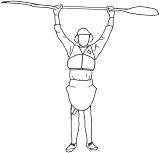

Come to me Stop


OK Help


Reverse Go direction indicated
Whistle signals
Whistle signals need to be confirmed with the group prior to paddling. More or less signals can be used by a group if required as long as all have a good understanding of their meanings.
One whistle: Look at me (follow paddle signals)
Three whistles: Emergency
Whitewater
The International River Grading System has been designed to provide an indication of the degree of difficulty of a rapid and/or river. It is not an absolute scale and should be used with the understanding that the scale does not indicate the full extent of hazards that may be encountered on a river:
- The degree of remoteness, overhanging trees and other elements that add risk to the trip that aren’t actually part of the river, are not accounted for in this system
- Rivers tend to be graded by the grade of the majority of the rapids they contain, but there may be one or two much harder rapids on the river
- The skills needed to paddle, for example, technical Grade 4 rivers are very different from the skills needed to paddle big volume Grade 4 rivers
- It should be remembered that the higher the grading the greater the risks involved in swimming
- Paddling one very difficult rapid, say Grade 4, presents a different level of risk than paddling an entire river of continuous Grade 4 rapids
- The degree of difficulty of rivers can change significantly at different water levels
- Slight variations in the interpretation of the grading will exist in each local region according to the nature of the rivers found there.
Experienced local paddlers are the best source of information about rivers.
The following descriptions are a basic guide to each grade.
Grade 1: Easy Slow to medium flowing water with very small, regular waves or riffles. Relatively few obstacles, with an easy path to find and follow. Suitable for novices.
Grade 2: Medium Rapids are straightforward with medium sized, regular waves. The path through rapids can be clearly seen from the water and is often indicated by well-defined chutes or Vs of water. There are some obstacles that require manoeuvring around, but paddlers with a good command of basic strokes can easily miss them.
Grade 3: Difficult Rapids have moderate, irregular waves and strong currents. Manoeuvring is required to follow the preferred route. Small to medium sized stoppers may have to be negotiated. The route is difficult for inexperienced paddlers to see and scouting is advisable. Suitable for experienced Whitewater paddlers, with the ability to roll an advantage.
Grade 4: Advanced Rapids have large waves and powerful confused currents. Drops are big and stoppers can be large and unavoidable. Fast manoeuvres may need to be made. The route is not clear, and scouting may be needed. Suitable only for very experienced Whitewater paddlers with consistent skills and reliable rolls.
Grade 5: Expert Extremely long, obstructed or powerful rapids. Rapids may contain very large unavoidable drops, waves, and stoppers and turbulent, unpredictable currents. Fast and accurate manoeuvring is necessary. Eddies may be very small, turbulent and scarce. The route is complex and scouting is highly recommended. Suitable only for expert paddlers, who are willing to accept the higher level of risk. Rolling in adverse conditions is essential. Swimming is very dangerous.
Grade 6: Extreme Rapids are extremely technically difficult, powerful and unpredictable. They are rarely paddled, and if they are paddled successfully they are usually downgraded to Grade 5 plus.
The river cannot be paddled without severe risk to life.
Flatwater
Flatwater areas are defined as lakes, dams, slow moving rivers, etc. An area should not be classified as Flatwater if any of the following apply:
- Rapids of any grade
- Surf (of any size) entry or exit
- An entrance structure to an estuary or embayment Affected by swell
- Documented tidal rips
- Documented tidal current greater than 1 knot
- Where the tide (rise or fall) removes a landing area or makes it unsuitable
- Distances greater than 400 metres from shore
- Fetch greater than 1 nautical mile
Sea Environments
Sea environments can be classified as three distinct areas:
- Sea – outside of estuaries, harbours, embayments or other sheltering reefs or islands
- Enclosed Sea – inside of estuaries, harbours, embayments or other sheltering reefs or islands
- Coastal – outside of estuaries, embayments or other sheltering reefs or islands Areas of exposed coastline that are simple, not involving overfalls or tidal races
Each of these areas will be dictated according to many factors, including the following:
- wind strength
- duration the wind has been blowing
- fetch
- depth
- bottom type and shape
- presence and type of shore lines
- currents
- air and sea temperature
- tide
For a PDF Incident report form please click here
For a template of a risk management form in word, please click here






